Wise Words From A Yogi: Eliminating Fear
It was Jesus Christ who told us to fear not! 365 times in the Bible.
That is one fear not per day of the year.
How many times until it becomes mathematically impossible?
Jesus knew and he told us what we need to do: enter through the narrow gate.
Tune into tonight’s podcast on A Fistful of Truth here https://open.spotify.com/show/1MlJX8emFw49mMY9PHXcYX?si=qRKo00A6TpC5JKGAp59T2Q&dl_branch=1 for more information about What Is Going On?
In the meantime, many of The Walking, Shedding Jabbers are in fear and they are affecting those around them.
Remember to always Protect Your Energy: #HoldTheLine and Drop the Disbelievers!
Many of you already have and Let Your Tribe Find You.
The Truth Is Not For Everyone.
But you, you who are here reading, researching and following the path of truth, you are not alone and in good company.
What is coming?
Moar fear for the uninformed. Especially for the vaxxed zombies. This is just beginning for them.
And as far as for truth seekers, patriots and anons?
A beautiful new humanity.
But it’s going to take some time to get there.
So that is why we must Hold The Line!
In the meantime, here is a message from Yogi that you can absorb and maybe pass on to others. I forwarded this to many friends today.
God bless you.
🙏🏼 ♥️ ✝️ 🕉
Eliminating the Static of Fear from the Mind Radio
Fear Cannot Enter a Quiet Heart*
By Paramahansa Yogananda
Fear comes from the heart. If ever you feel overcome by dread of some illness or accident, you should inhale and exhale deeply, slowly, and rhythmically several times, relaxing with each exhalation. This helps the circulation to become normal. If your heart is truly quiet you cannot feel fear at all.
Anxieties are awakened in the heart through the consciousness of pain; hence fear is dependent on some prior experience — perhaps you once fell and broke your leg, and so you learned to dread a repetition of that experience. When you dwell on such an apprehension your will is paralyzed, and also your nerves. Furthermore, when your heart becomes paralyzed by fear, your vitality is low and disease germs get a chance to invade your body.
Techniques of Tuning Out Fear
Whatever it is that you fear, take your mind away from it and leave it to God. Have faith in Him. Much suffering is due simply to worry. Why suffer now when the malady has not yet come? Since most of our ills come from fear, if you give up fear you will be free at once. The healing will be instant.
Every night before you sleep affirm: “The Heavenly Father is with me; I am protected.” Mentally surround yourself with Spirit and His cosmic energy and think: “Any germ that attacks me will be electrocuted.” Chant “Aum” three times, or the word “God.” That will shield you, you will feel his wonderful protection. Be fearless. That is the only way to be healthy. If you commune with God His truth will flow to you. You will know that you are the imperishable soul.
By Paramahansa Yogananda
The best cure for nervousness is the cultivation of calmness. One who is naturally calm does not lose his sense of reason, justice, or humor under any circumstances. He does not poison his bodily tissues with anger or fear, which adversely affect circulation.
Poise is a beautiful quality. We should pattern our life by the triangular guide: calmness and sweetness are the two sides; the base is happiness. Every day, one should remind himself: “I’m a prince of peace, sitting on the throne of poise, directing my kingdom of activity.” Whether one acts quickly or slowly, in solitude or in the busy marts of men, his center should be peaceful, poised. Christ is an example of that ideal. Everywhere, he demonstrated peace. He passed through every conceivable test without losing his poise.
God is everywhere, controlling planets, galaxies; yet He is not disturbed. Though He is in this world, yet He is above this world. We must reflect His image and likeness. We must meditate often and hold on to the peaceful aftereffects. We must send out thoughts of love, goodwill, harmony. In the temple of meditation, with the light of intuition burning on the altar, there is no restlessness, no nervous striving or searching. Man is truly home at last, in a sanctuary not made with hands, but with God-peace.
* [Man’s Eternal Quest, p. 84]
** [Man’s Eternal Quest, p. 90]
POSTS
PRAYERS
The wicked flee when no one pursues, but the righteous are bold as a lion. Proverbs 28:1
🙏🏼✝️🕉PRAY WITH US NIGHTLY 7PMEST/8PMT/9PMCST/10PMEST🙏🏼✝️🕉
LINKS AND ARTICLES
Lab-Grown Meat Is a Disaster in the Making via Dr. Joseph Mercola https://articles.mercola.com/sites/articles/archive/2021/10/07/lab-grown-meat-is-a-disaster-in-the-making.aspx?cid_source=telegram&cid_medium=social&cid_content=mercola&cid=nonlead_20211007
(Since this article may disappear, I am reposting it via Dr. Mercola here):
STORY AT-A-GLANCE
- Underneath the greenwashed façade, lab-grown meat has been hyped beyond reality and its promises are slated to fall flat
- In February 2021, the Good Food Institute (GFI), a nonprofit group behind the alternative protein industry, released a techno-economic analysis of cultivated meat, which claims cultured meat could be economically feasible by 2030; this is disputed by several experts
- One expert estimated that the cost for 1 kilogram (kg) (35.27 ounces) of cell culture product for human consumption would cost in excess of $8,500 to $3,600 per kilogram
- Pharmaceutical-grade specifications and aseptic “clean rooms” would be necessary due to the slow growth rate of culture cells, which makes them extremely vulnerable to contamination from bacteria and viruses; GFI’s report assumes only “food-grade” specifications
- When lab-grown chicken made by U.S. startup Eat Just debuted in Singapore in 2020, it was produced using fetal bovine serum, largely canceling out one of the key tenets of the cultured meat rhetoric — that it’s made without animals
- GFI’s life-cycle analysis found that cultured meat may be worse for the environment than conventionally produced chicken and pork if conventional energy sources are used
- Fake meats are not about your health or the environment’s; they’re a tool to phase out farmers and ranchers and replace them with an ultraprocessed food product that can be controlled by patents
Lab-grown, or cultured, meat is being promoted as the wave of the future — the “green, sustainable” way to have your meat and eat it too. No animal suffering, no greenhouse gas emissions — just meat-like protein that will taste exactly like the burgers and steaks you’re used to. Sound too good to be true?
Underneath the greenwashed façade, lab-grown meat has been hyped beyond reality and its promises are slated to fall flat. Fake meats are not about your health or the environment’s; they’re a tool to phase out farmers and ranchers and replace them with an ultraprocessed food product that can be controlled by patents.
Not only is ultraprocessed lab-grown meat not a healthy choice for humans, but its production is plagued with environmental and contamination concerns that are likely to thwart the industry before it ever gets off the ground. Ironically, the real wave of the future won’t be found via technology but through the return to regenerative farming practices that have been time-tested and valued for ages.
GFI Promises Fake Meat by 2030
In February 2021, the Good Food Institute (GFI), a nonprofit group behind the alternative protein industry, released a techno-economic analysis of cultivated meat, which was prepared by consulting firm CE Delft.1 In it, they developed a model to reduce the current costs of cultured meat production down to a point that would make it economically feasible in full-scale plants by 2030, a model they said is “feasible.”
But as Joe Fassler, The Counter’s deputy editor, wrote in an in-depth exposé about the actual science behind lab-grown meat,2 this would mean lowering “the production price from over $10,000 per pound today to about $2.50 per pound over the next nine years — an astonishing 4,000-fold reduction.”
GFI’s report makes it seem as if cultured meat will be readily available on grocery shelves within the next decade, and it’s this type of propaganda they need if they’re going to continue to attract public and private funding. Proponents are calling on the U.S. government to invest billions in fake meat products, but if they fail — as science suggests they may — it’s taxpayers who suffer.
In The Counter report, Fassler spoke with Paul Wood, a former pharmaceutical industry executive, who was so outraged by GFI’s TEA report, which “did little to justify increased public investment,” that he hired Huw Hughes, a former Pfizer colleague and private consultant who’s worked on multiple sites to culture cells at scale, to analyze GFI’s analysis.3 According to Fassler:4
“Hughes concluded that GFI’s report projected unrealistic cost decreases, and left key aspects of the production process undefined, while significantly underestimating the expense and complexity of constructing a suitable facility.”
In his review, Hughes wrote that “a finished product fit for consumption is not defined, and so estimating a cost for an acceptable consumer product is challenging.” Still, he estimated that the cost for 1 kilogram (kg) (35.27 ounces) of cell culture product for human consumption would cost in excess of $8,500 to $3,600 per kg. “By comparison,” he wrote, “the wholesale price of trimmed chicken meat in the U.S. is $3.11.”5
Cultured Meat Plagued by Technical Challenges
While GFI is pushing for more investments to bring cultured meat to the market, another TEA, this one conducted by chemical engineer David Humbird for Open Philanthropy,6 found that cultured meat may remain too expensive to ever come to market, and claimed that extreme technical challenges would likely prove insurmountable. Fassler wrote:7
“Though Humbird lays out his case with an unprecedented level of technical detail, his argument can be boiled down simply: The cost of cultivation facilities will always be too burdensome, and the cost of growth media will always be too high, for the economics of cultured meat to make sense. It’s a stark finding, one that’s unusually unequivocal for a scientific document — and it should have made waves in the alternative protein sphere.”
One important distinction is that GFI assumes that the cultured meat facilities of the future will be food-grade, as opposed to pharmaceutical-grade — the latter of which would increase costs even further. Humbird’s report assumed pharmaceutical-grade specifications and aseptic “clean rooms” would be necessary due to the slow growth rate of culture cells, which makes them extremely vulnerable to contamination from bacteria and viruses. Humbird told Fassler:8
“Bacteria grow every 20 minutes, and the animal cells are stuck at 24 hours. You’re going to crush the culture in hours with a contamination event … There are documented cases of, basically, operators getting the culture sick.
Not even because the operator themselves had a cold. But there was a virus particle on a glove. Or not cleaned out of a line. The culture has no immune system. If there’s virus particles in there that can infect the cells, they will. And generally, the cells just die, and then there’s no product anymore. You just dump it.”
Wood added, “We’re saying, guys, it has to be pharmaceutical-grade because the process is going to demand it. It’s not whether someone will allow you [to run at food-grade specs.] It’s just the fact you can’t physically do it.”9
Attempting to use large reactors for slow-growing animal cells only complicates matters further. Using Humbird’s pharmaceutical-grade specifications to build one of GFI’s hypothetical fake meat plants with “130 fed-batch reactors and 430 perfusion reactors” could cost more than $1 billion. But that may be beside the point, Humbird said:10
“You can make a big plant, or you can make a clean plant. So if you want to feed millions and millions of people, it’s got to be big. But if you want to do it with animal cells, it’s got to be clean. We need both, and you can’t do that.”
Neil Renninger, another chemical engineer who spoke with Fassler, agreed, stating:
“There’s a reason why the biopharmaceutical industry’s largest bioreactors for animal cell culture tend to peak at about 25,000 liters. It’s not so much that it’s just never been done. It’s that it’s never been done because it doesn’t make sense. It’s never been done because you can’t. You’re just going to be producing vats of contaminated meat over and over again.”
Fetal Bovine Serum Is Often Used to Grow Cultured Cells
Fetal bovine serum (FBS), which comes from fetal calves, is often used to grow cultured cells because of the proteins and vitamins it contains. Fassler cited a 2013 study that stated, “In many common culture media, the sole source of micronutrients is fetal bovine serum (FBS) …”11
When lab-grown chicken made by U.S. startup Eat Just debuted in Singapore in 2020 — marking the first cultured meat to be sold at a restaurant12 — it was produced using FBS, largely canceling out one of the key tenets of the cultured meat rhetoric — that it’s made without animals.
Growing cultured meat without FBS is another hurdle that the industry will need to overcome, as currently FBS-free medium may cause cultured meat to cost over $20,000 per kg. GFI’s report suggested that if the cost of FBS-free mediums could be reduced, it would drive down the cost of cultured meat by 90%. This too, however, is unlikely.
“[T]he report provides no evidence to explain why these micronutrient costs will fall, and both Wood and Hughes expressed skepticism that they would,” Fassler wrote. “‘They say, oh, but these costs are just going to go away in five years or 10 years,’ Hughes said. ‘And there’s no explanation as to how or why.’”13
Amino acids are another hurdle. Cultured cells require them to survive, and Humbird estimated that their cost would add about $8 per pound to the finished product. GFI put the cost considerably lower, at 40 cents per kilogram, but this is based on an amino acid protein powder being sold for $400 a ton on Alibaba.com — one that’s not suitable for human consumption. As Fassler explained:14
“Via a chat tool, I asked the Alibaba vendor if the product would be acceptable for use in pharmaceutical-grade applications. ‘Dear,’ she wrote back, ‘it’s organic fertilizer.’ (In other words, it would not be.) As described on the webpage, the product is intended to be used in crop irrigation systems to help with plant nutrient uptake.
The vendor did confirm it would be appropriate to use as an additive in livestock feed. But nutrition sources like the one sold on Alibaba will probably never work for animal cell culture, despite the attractive price tag.
Because they’re not intended for human consumption, they may include heavy metals, arsenic, organic toxins, and so on. That’s a problem. Animal cells lack a rigid cell wall, so foreign substances that aren’t consumed by the cells — or that don’t kill them outright — likely end up inside the cells. In other words, cells are what they eat: If it’s in the feed, it will end up in the cultured meat.”
It may be possible to develop a full amino acid profile from GE soy, but this brings up yet another problem — the destructive agricultural practices that come along with it.
Cultured Meat Probably Won’t Feed the World
In attempting to create cultured meat on the scale that would be necessary to feed the world, logistical problems are numerous and, possibly, insurmountable. There are waste products — catabolites — to deal with, as even cultured cells excrete waste that is toxic.
And the oxygen and nutrients available must be adequately distributed to all the cells — something that’s difficult in a large reactor. Stirring the cells faster or adding more oxygen may help, but this can cause fatal stress to the cells.
“When cells die in large quantities, they kind of turn into this kind of slimy stuff that’s really horrible,” Hughes told Fassler. “You really can’t afford to have that happen.”15
The environmental “benefits” are also on shaky ground when you factor in soy production as well as the use of conventional energy sources. When this is factored in, GFI’s life-cycle analysis found that cultured meat may be worse for the environment than conventionally produced chicken and pork.16,17
Fake Meat Is a Health Disaster
While cultured meat is still a long way off from reaching the mainstream, plant-based meat alternatives are already here. These are also ultraprocessed junk foods with excess amounts of omega-6 fat in the form of linoleic acid (LA). This is one of the most significant contributors to metabolic dysfunction. In my opinion, this metabolic poison is the primary contributor to the rising rates of chronic disease.
LA leads to severe mitochondrial dysfunction, decreased NAD+ levels, obesity, insulin resistance and a radical decrease in the ability to generate energy. The genetic engineering used to produce the flavor and texture of real meat does not reproduce healthy fatty acid composition because the substrate is canola and sunflower oils as the primary source of fat.18,19 The sunflower oil used in both Impossible Burgers and Beyond Meats is 68% LA,20 which is an extraordinarily high amount.
It is dangerous because LA is susceptible to oxidation and causes oxidation byproducts called OXLAMs (oxidative linoleic acid metabolites). These byproducts devastate your DNA, protein, mitochondria and cellular membrane. This means that fake meat is failing at all measures of sustainability and health.
Scientists are even working on lab-grown meat made from human cells that are being harvested from the inside of your cheek,21,22 so there’s no telling how far the fake meat industry will go. Again, this isn’t about human health or the environment. Using intellectual property, tech giants hope to replace living animals with patented plant- and animal-derived alternatives, which will effectively control the food supply.
Bill Gates’ 242,000 acres of farmland — spread across Illinois, Louisiana, California, Iowa and nearly one dozen other states23 — appear to be earmarked for GE corn and soy crops24 — in other words, the basis for the fake meat and ultraprocessed foods.25
The food critic for the Financial Times,26 Tim Hayward, wrote a piece in September 2021, in which he made a strong case for how lab-grown meat is not about sustainability or making “green” decisions but rather about intellectual property (IP) and creating a financial windfall.
He took a historical perspective on IP, listing the patents that have been filed protecting breakfast cereals, carbonated beverages, drugs, vaccines, GE plants and pesticides. In each case the IP owned by Kellogg, Coca-Cola, McDonald’s, Big Pharma and agrichemical businesses was the lifeblood of their financial success. He wrote:27
“Currently, there’s not a lot of IP in the meat industry … Saving animal lives, preventing the clear-cutting of rainforest, even the reduction of methane farts don’t excite investors — those changes can’t translate to profit.
The holy grail is replacing the meat we consume with a proprietary product, owning the IP on meat. Coca-Cola and McDonald’s managed to grow patented food products into two of the top food companies on the globe by market cap, but a patent on animal-free ‘meat’ could entirely dwarf their achievements.”
Fake Meat Isn’t the Answer
The EAT Forum, co-founded by the Wellcome Trust, developed a Planetary Health Diet28 designed to be applied to the global population. It entails cutting meat and dairy intake by up to 90%, replacing it largely with foods made in laboratories, along with cereals and oil.
Their largest initiative is called FReSH, which aims to transform the food system by working with biotech and fake meat companies to replace whole foods with lab-created alternatives. In other words, once tech giants have control of meat, dairy, cereals and oils, they will be the ones profiting from and controlling the food supply.
Private companies that control the food supply will ultimately control countries and entire populations. Biotech will eventually push farmers and ranchers out of the equation and will threaten food security. In other words, the work being done in the name of sustainability and saving the planet will give greater control to private corporations.
To save the planet and support your health, skip all the fake meat alternatives and opt for real food that’s being raised the right way instead. When you shop for food, know your farmer and look for regenerative, biodynamic and/or grass fed farming methods, which are bringing you truly sustainable food for a healthy population and planet.
VIDEOS
selective attention test
FUNNIES & MEMES
Today’s Meme Parade
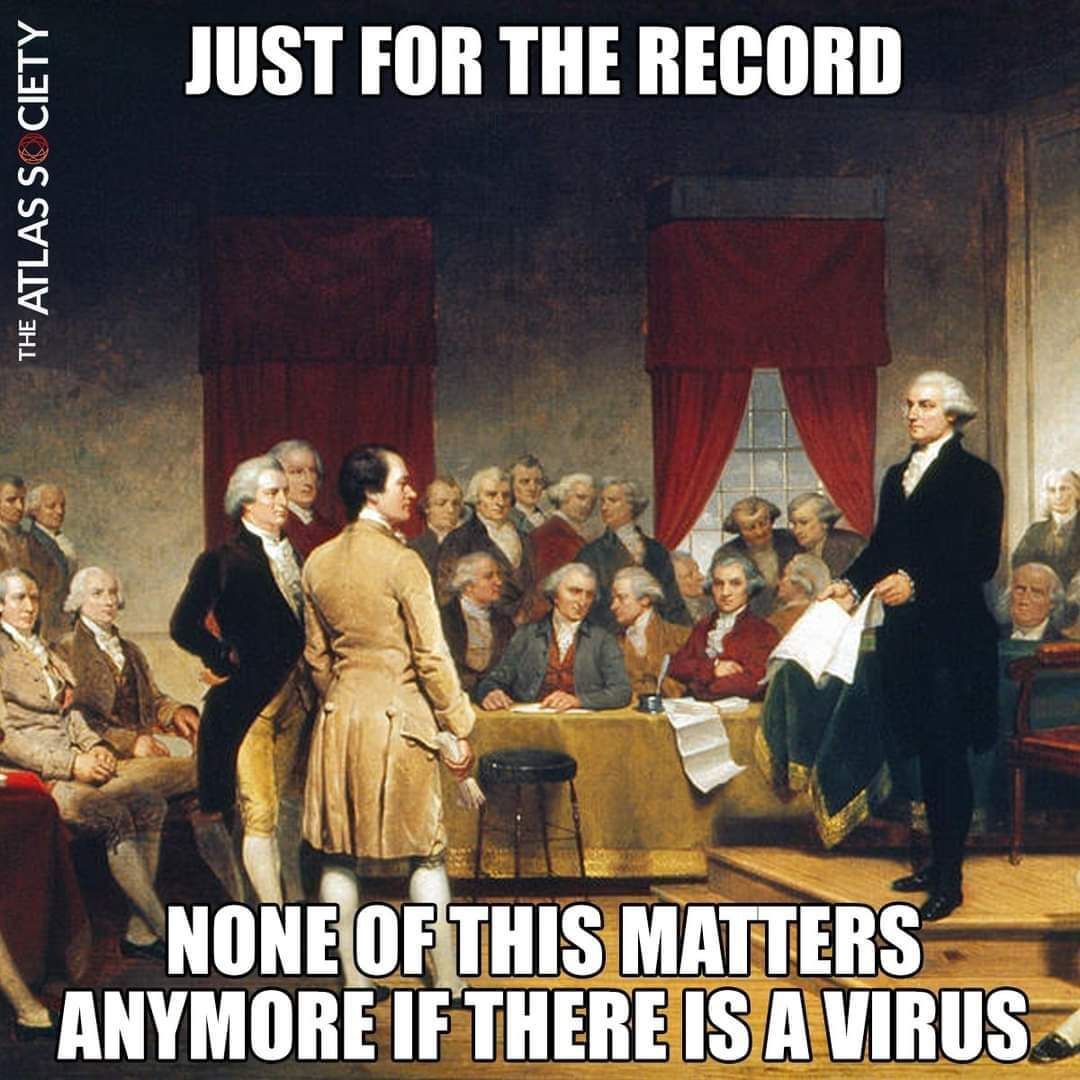
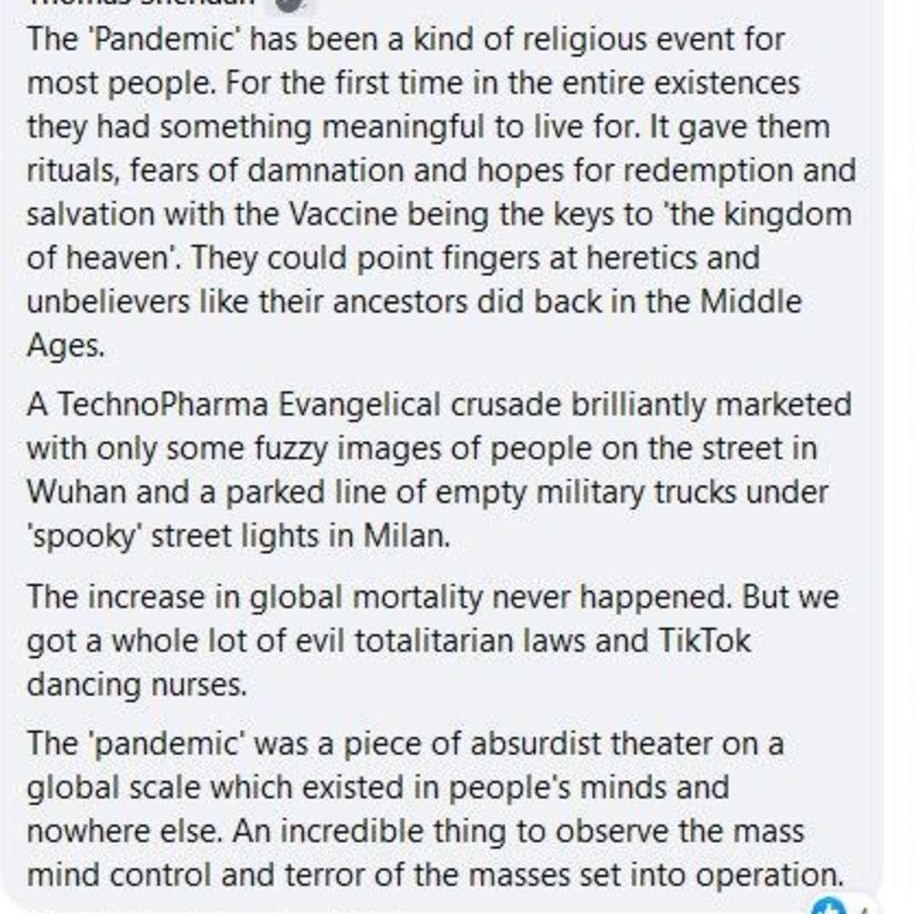






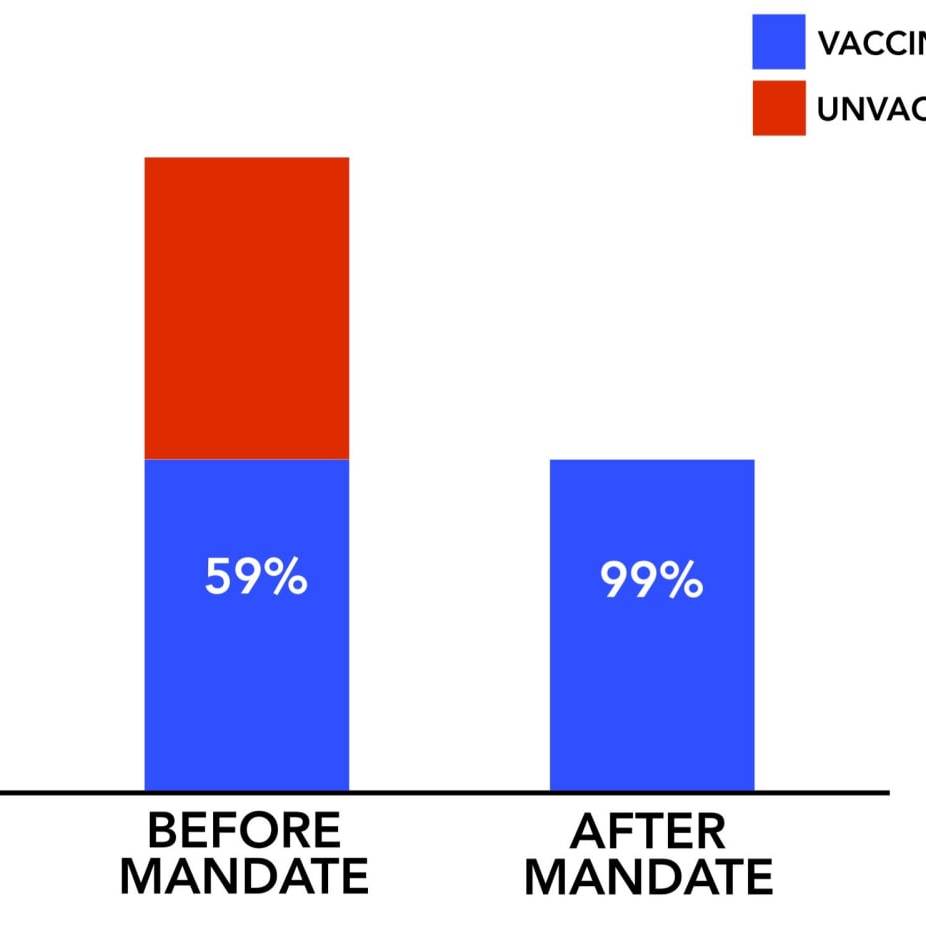

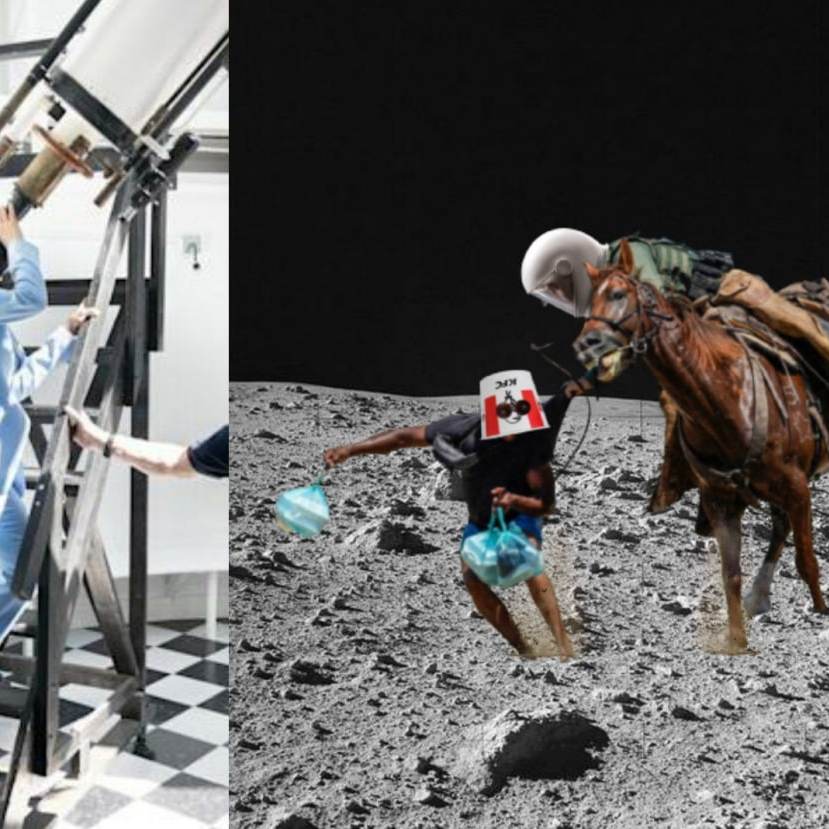


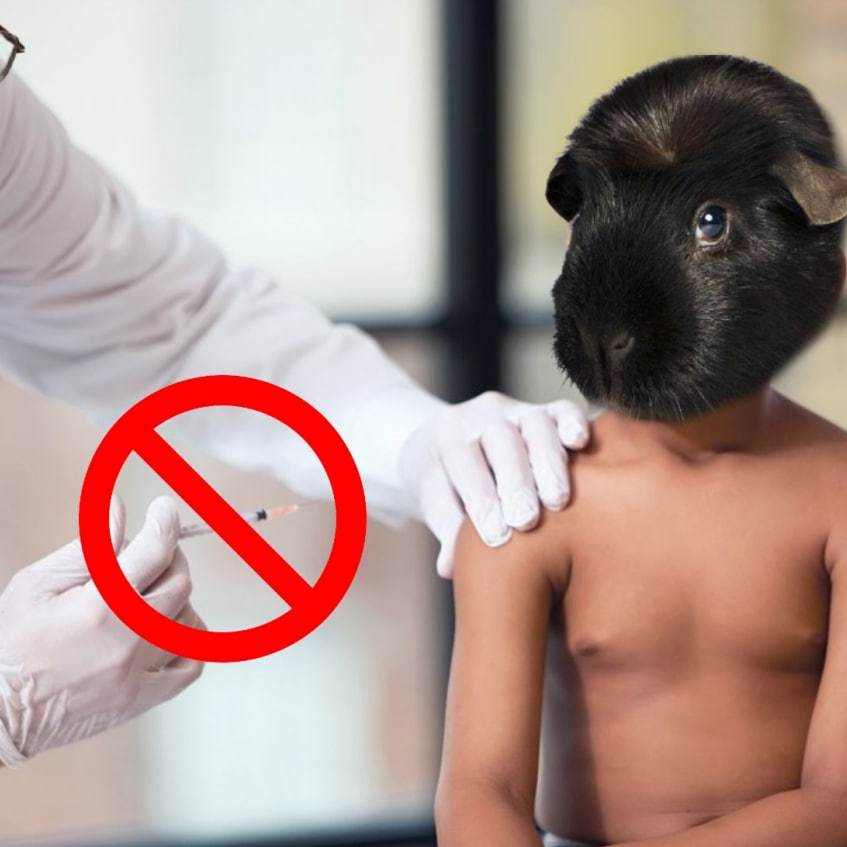






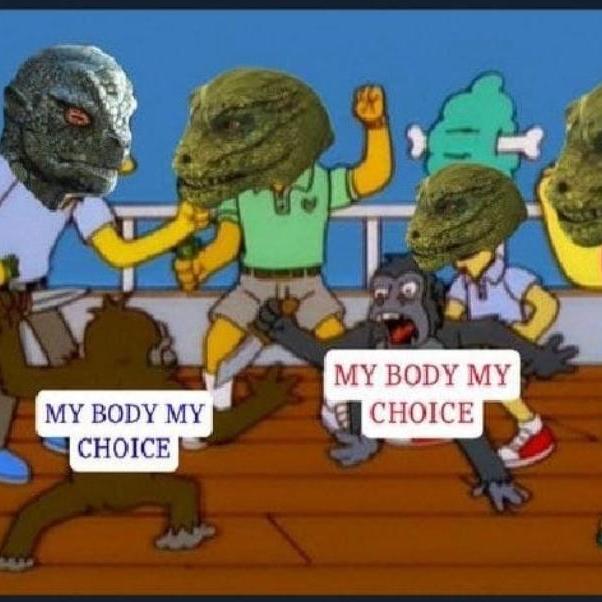
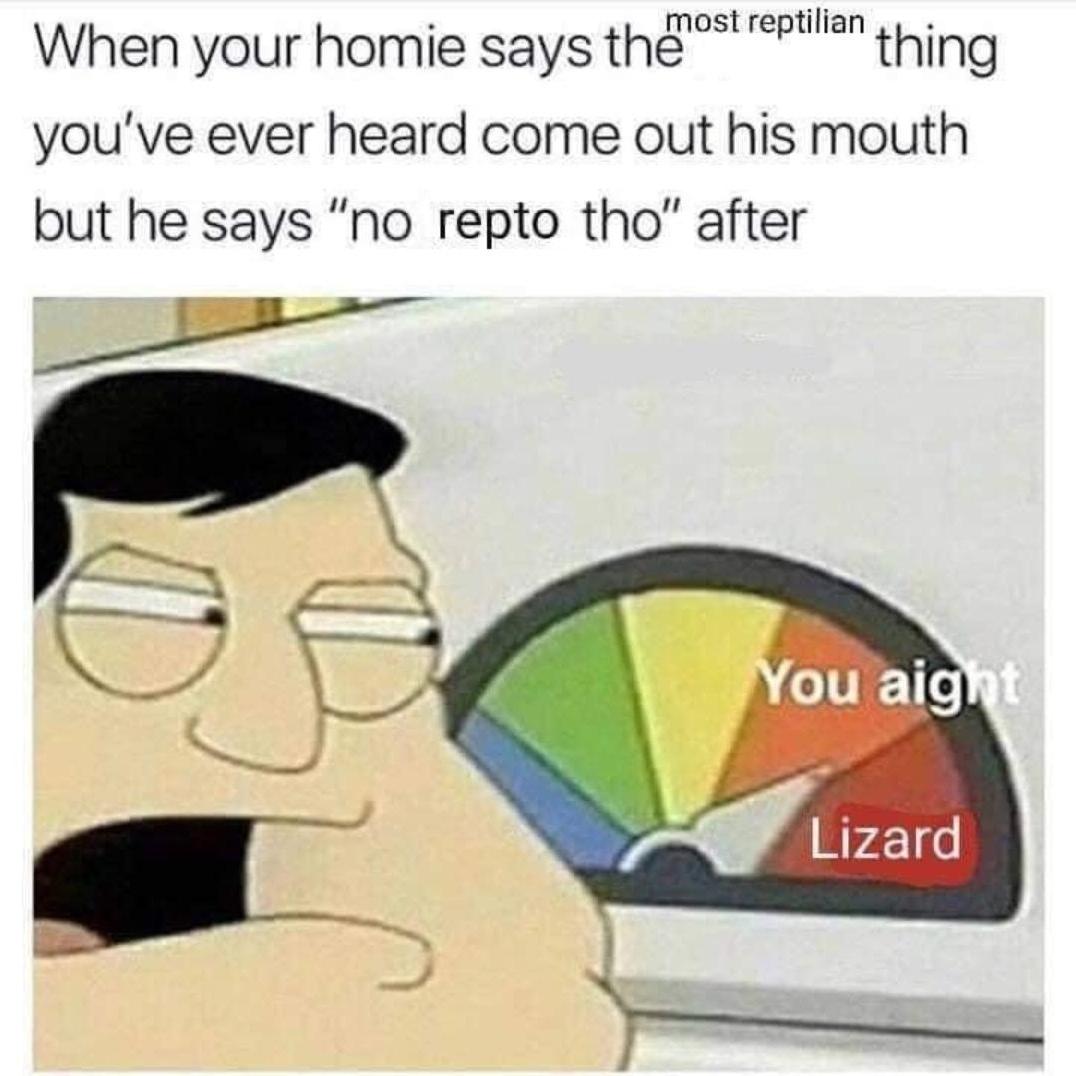
Bill’s Hall of Infamemes
Today’s Blog Contributors:
Bill, Study, Kel, 7Alon, Ron & Rachel, Brad & Selcuk
NEW PODCAST ON SPOTIFY: A FISTFUL OF TRUTH
You can follow my podcast A Fistful Of Truth delivered daily on Spotify. Those who asked about how to support this show, the support link is here:🙏🏼 https://anchor.fm/dilara-esengil/support 🙏🏼
💊 Follow and Listen to A Fistful of Truth podcast here 👇🏼🎧
About This Blog:
Please make sure to subscribe to this blog by scrolling to the bottom and clicking “Follow” where you will be prompted to enter your email address which will remain private and your information is not shared with advertisers (there are none). You only get an email when there is a new post. This is a free service bought to you by patriots.
Also, thank you all for your comments. I love hearing from all of you – it’s one of my favorite parts about this blog. Your feedback and insights and unity. God bless you all. Love you all.
~ Dilara 10.11.21
🙏🏼 ♥️ ⚖️
You can follow me on GAB: @DilaraEsengil or Twitter @EsengilDilara (my old account is suspended #StayTheCourse: Twitter Suspension) but I’m mostly here on the blog. ♥️
Categories: Uncategorized




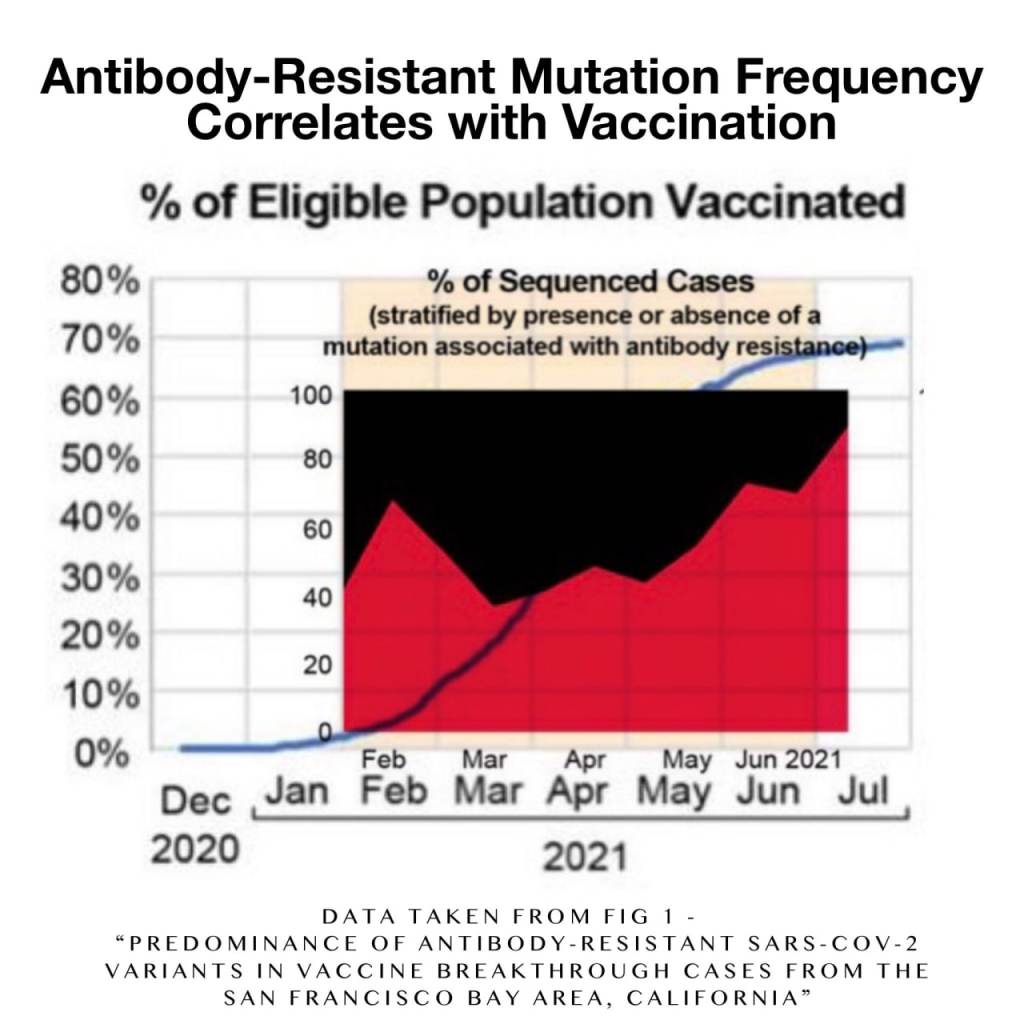



Yogananda is the absolute best….I started reading his books in 2001
Amen! LOVE him!
Dilara, Stop looking for a job, as you said you don’t want to go back to the matrix. And as Jesus said fear not. You have a job, God gave you THIS JOB just what you are doing. You have God and Many supporters. Many of us have similar stories and we’ll be ok. God has us where He wants us. I can most certainly say that for myself. 💕
Thank you Adella. Im just a little freaked out no income! God WILL provide! Amen! Thank you. God bless you. #WWG1WGA